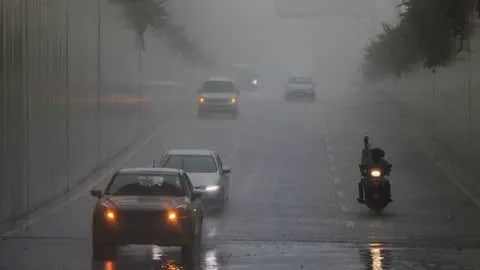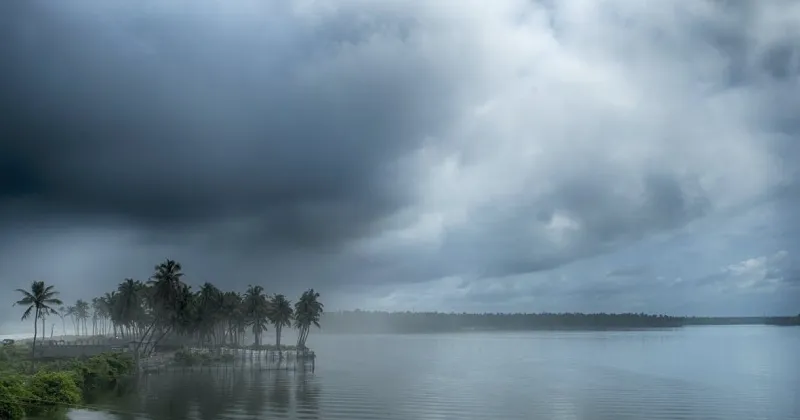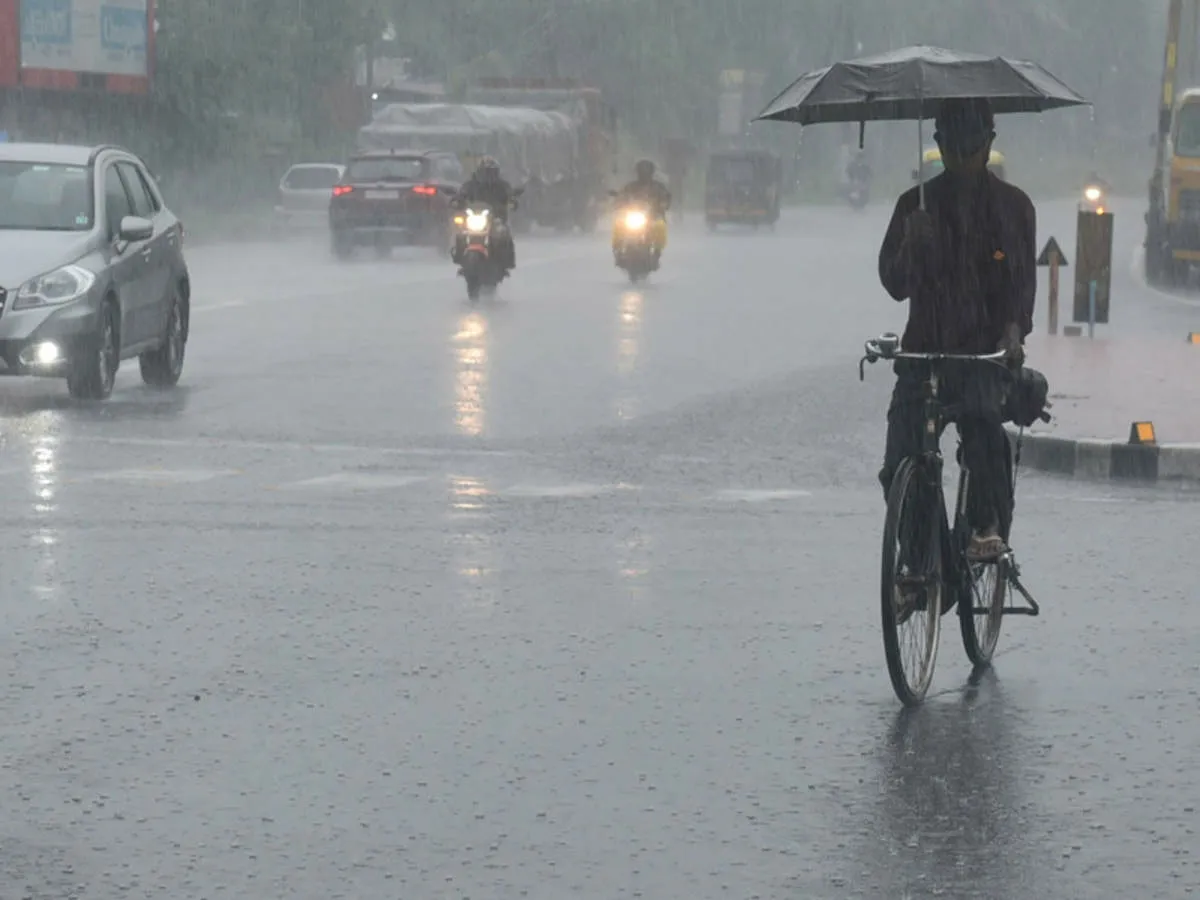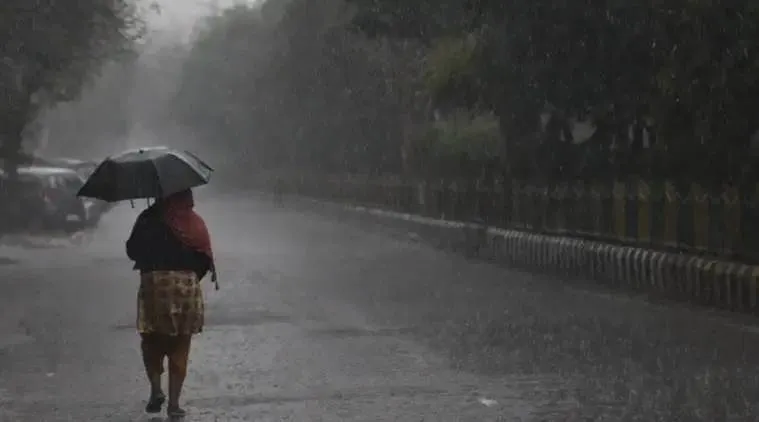Monsoon or Pavas, originally from the Indian Ocean and the Arabian Sea, is called the winds that come on the south-west coast of India, which cause heavy rain in India, Pakistan, Bangladesh etc. These are such 'seasonal winds', which are active in the South Asia region from June to September, usually for four months. The term was first used in British India (present-day India, Pakistan and Bangladesh) and in the context of neighboring countries. It was used for the large seasonal winds from the Bay of Bengal and the Arabian Sea, which blow from the south-west and bring heavy rains to this region. It receives most of the rainfall in a particular season in the region. It is worth mentioning here, that the monsoon winds should not be taken to mean rain for most of the time. From the point of view of this definition, other regions of the world, such as North America, South America, Sub-Saharan Africa, Australia and East Asia can also be placed in the category of monsoon region. This word is an aberration of the word weather of Hindi and Urdu. Monsoon completely depends on the flow of winds. Monsoon comes when the normal winds change their direction.. When they move from cold to warm areas, the amount of moisture in them increases, due to which rainfall occurs.

Source
Monsoon clouds over Lucknow, Uttar Pradesh
Monsoon used in Hindi comes from the English word 'monsoon', and which English has taken from the 'Portuguese word 'monção (monsao), whose root is the Arabic word 'mausim' (موسم "weather"). Apart from Hindi and Urdu, this word is also used in various North Indian languages. a link of which is also found in the early modern Dutch word 'monson'. According to this definition, the main air systems of the world are included, whose directions change seasonally.
Most of the 'summer' monsoons have a strong western component along with the tendency of heavy to very heavy rainfall. The reason for this is the abundance of water vapor in the rising air. However, their intensity and duration are not the same in each year. In contrast, winter monsoons have a strong eastern component, with a tendency to spread and descend and become dry.
World's monsoons
The system of major monsoon is the world include in West African and Asia or Australian monsoons. Some differences still persist in including the North American and South American monsoons in this category.
South Asian

Source
Indian monsoon
Monsoon in India depends on the winds coming from the Indian Ocean and the Arabian Sea towards the Himalayas. When these winds hit the Western Ghats on the southwest coast of India, there is heavy rainfall in India and surrounding countries. These winds are active in South Asia from June to September. By the way, the monsoon of any region depends on its climate. With respect to India, the climate here is tropical and it is mainly influenced by two types of winds - the north-east monsoon and the south-west monsoon. The north-east monsoon is often called the winter monsoon. These winds blow from the plain to the sea, which come across the Indian Ocean, the Arabian Sea and the Bay of Bengal. Most of the rainfall here comes from the southwest monsoon. The Tropic of Cancer originates in India from east to west. It has a direct impact on the climate of the country. Out of the summer, winter and rainy seasons, the rainy season is often called monsoon.
Normally during the monsoon period there is a decrease in the 'temperature', but there is a good increase in the 'humidity'. Humidity is considered to have an important role in climatology. It is formed by the amount of water vapor present in the atmosphere and it reaches the atmosphere from the earth through various forms of evaporation.

Source
East Asian
The East Asian monsoon affects large areas of Indo-China, Philippines, China, Korea and Japan. Its main nature is hot, rainy summers and cold-dry winters. Most of this rainfall is confined to a fixed area extending east-west, except in eastern China where rainfall occurs east-northeast in Korea and Japan. Seasonal rainfall is called Meiyu in China, Changma in Korea and Bai-yu in Japan. The arrival of summer rains is accompanied by a pre-monsoon rain in early May in South China and Taiwan. After this, from May to August, the summer monsoon is followed by several dry and wet series. It begins in Indochina and the South China Sea (in May) and reaches the Yangtze River in Japan (by June), and finally into North China and Korea by July. At the end of the monsoon period in August, it returns to South China.
Africa
The western-sub-Saharan Africa monsoon was previously thought to result from seasonal changes in the "intertropical saturation zone" and temperature and humidity differences between the Sahara and the equatorial Atlantic. Reaches West Africa by June 22 and retreats clockwise by October. The dry north-westerly trade winds and their extreme form, the Harmattan, are influenced by the northern shift in the ITCZ, and the resulting clockwise winds bring summer rains. . The semi-arid regions of the Sahel and Sudan depend on this style for most of the rainfall in their desert regions.

Source
North America
Monsoon Clouds in Arizona
The North American monsoon (also called "NAM" in short) occurs from late June or early July to September. It originates from Mexico and provides rainfall till mid-July in the United States. As a result, rainfall and humidity occur in the Sierra Madre Occidental in Mexico as well as in Arizona, New Mexico, Nevada, Utah, Colorado, western Texas and California. They extend to the peninsular regions in the west and the transboundary ranges of southern California, but rarely reach the shoreline. The North American monsoon is also known as the Summer, Southwest, Mexican or Arizona Monsoon. It is sometimes called the Desert Monsoon, because most of its affected areas are in the Mojave and Sonoran Deserts .
